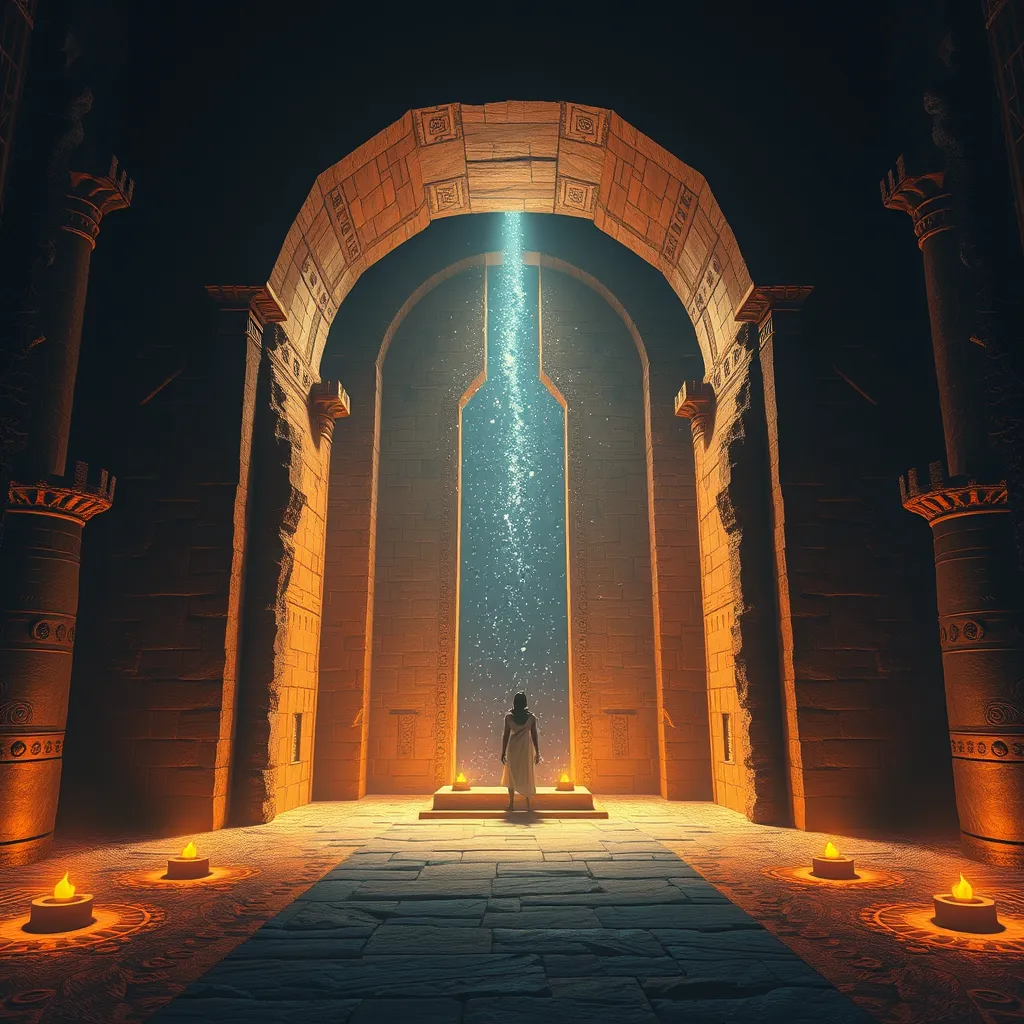The Duat: A Window into the Soul
I. Introduction
The Duat, in ancient Egyptian beliefs, is often described as the realm of the dead, a mystical landscape where the souls of the deceased journey after death. This concept is integral to understanding how the ancient Egyptians viewed the soul and the afterlife.
The Duat plays a crucial role in the Egyptian understanding of the soul, serving as a transitional space where the deceased undergo various trials before reaching their final destination. This article aims to explore the significance of the Duat, highlighting its geography, the journey of the soul, the deities associated with it, and its enduring legacy in contemporary culture.
II. The Concept of the Soul in Ancient Egypt
The ancient Egyptians had a complex understanding of the soul, which was divided into three main components: the Ka, Ba, and Akh.
- Ka: The life force or vital essence that exists with the body and continues after death.
- Ba: The personality or individuality that can travel between the living world and the afterlife.
- Akh: The transformed spirit of the deceased, which can achieve immortality.
After death, the soul embarks on a perilous journey through the Duat, where it faces trials and meets various deities. The Duat is not merely a destination; it is a necessary passage that the soul must navigate to attain eternal life.
III. The Geography of the Duat
The Duat is portrayed as a mystical landscape, often described in intricate detail in ancient texts. It consists of various realms and regions, each with its own characteristics and challenges.
- Fields of Iaru: A paradise where souls who have passed the trials enjoy eternal peace and abundance.
- Hall of Ma’at: The place where the weighing of the heart ceremony takes place, determining the fate of the soul.
The geography of the Duat symbolizes the challenges faced by the soul. Each location within the Duat serves as a metaphor for the trials of life and the moral choices one must confront.
IV. The Trials and Tribulations in the Duat
One of the most important events in the Duat is the Weighing of the Heart ceremony, which determines the soul’s fate.
A. The Weighing of the Heart Ceremony
During this ceremony, the deceased’s heart is weighed against the Feather of Ma’at, representing truth and justice.
- Role of Anubis: The god of embalming and the protector of graves, Anubis oversees the weighing process.
- Significance of the Outcome: If the heart is lighter than the feather, the soul is granted passage to the Fields of Iaru. If heavier, it is devoured by Ammit, the soul-eating monster.
Beyond the weighing of the heart, the deceased faces other challenges in the Duat, such as navigating treacherous waters and confronting various demons and obstacles that test their worthiness.
V. Deities of the Duat
The Duat is populated by numerous deities who play significant roles in guiding and protecting the souls of the deceased.
- Osiris: The god of the afterlife, who judges the souls and grants them eternal life.
- Ra: The sun god, who travels through the Duat each night, symbolizing rebirth and renewal.
- Isis: The goddess of magic and motherhood, who aids and protects souls in their journey.
Each of these deities is associated with various mythological stories, illustrating their importance in the journey of the soul through the Duat.
VI. The Duat in Funerary Practices
The Duat significantly influenced ancient Egyptian funerary practices, reflecting their beliefs about death and the afterlife.
A. Importance of Tombs and Burial Rituals
Tombs were constructed as gateways to the Duat, designed to provide the deceased with everything they would need for their journey. Rituals were performed to ensure a safe passage through the Duat.
B. Artifacts and Texts Related to the Duat
Ancient texts, such as the Pyramid Texts and the Book of the Dead, are filled with spells and instructions for navigating the Duat. These texts served as guides for the deceased, offering protection and wisdom.
C. How the Duat Influenced Egyptian Mortuary Customs
The belief in the Duat shaped not only burial practices but also the types of artifacts placed in tombs, including food, jewelry, and figurines to assist the deceased in the afterlife.
VII. The Legacy of the Duat in Contemporary Culture
The concept of the Duat has left an indelible mark on modern literature and media, inspiring countless works exploring themes of death and the afterlife.
A. The Duat in Modern Literature and Media
The Duat appears in various forms in contemporary novels, films, and video games, often symbolizing the journey of transformation and self-discovery.
B. Influence on Spirituality and Esoteric Traditions Today
Many spiritual and esoteric traditions draw upon the imagery of the Duat, using its symbolism to explore the process of personal and spiritual transformation.
C. The Duat as a Symbol of Personal Transformation
In modern contexts, the Duat represents the challenges and trials one faces in life, portraying the journey of the soul towards enlightenment and understanding.
VIII. Conclusion
The Duat serves as a profound symbol of the ancient Egyptian understanding of the soul and the afterlife. Its intricate geography, trials, and deities provide valuable insights into their beliefs and practices.
As we reflect on the Duat’s significance, it is clear that this ancient concept continues to resonate in modern spiritual discussions, reminding us of the universal quest for meaning beyond death.
Ultimately, the journey of the soul, as depicted in the Duat, invites us to contemplate our own paths and the transformative experiences that shape our existence.





